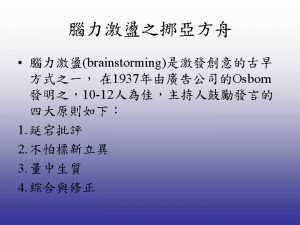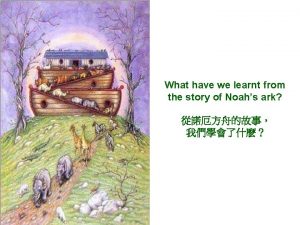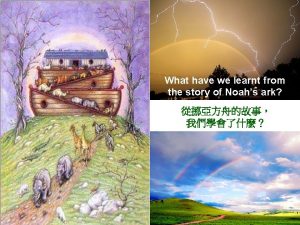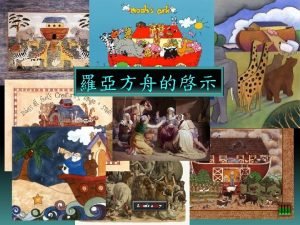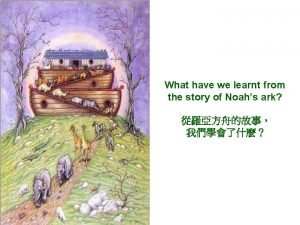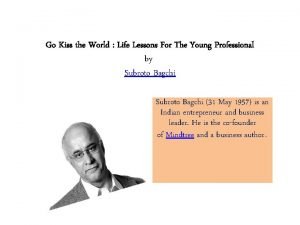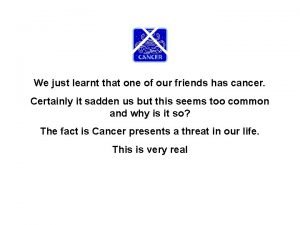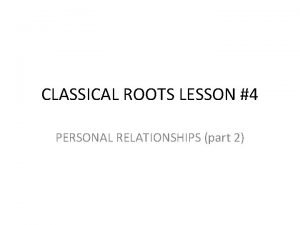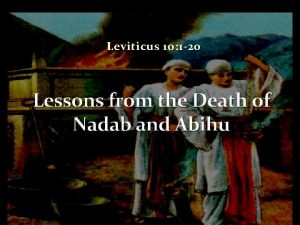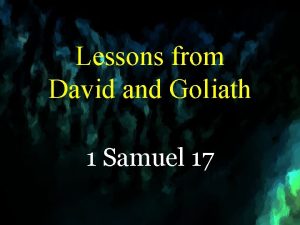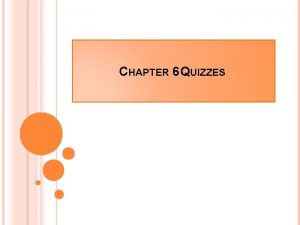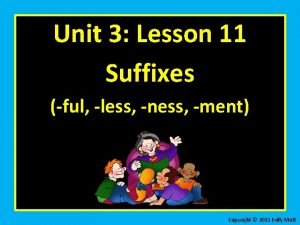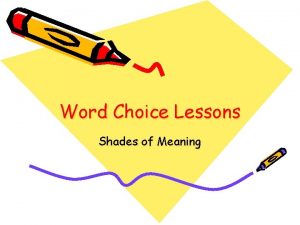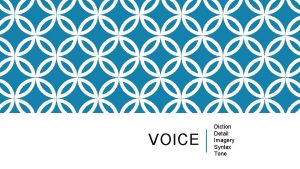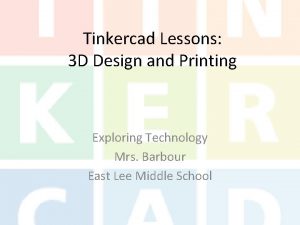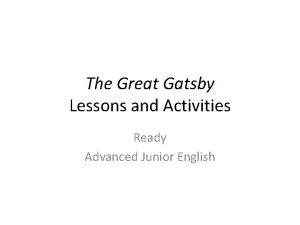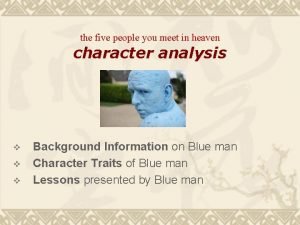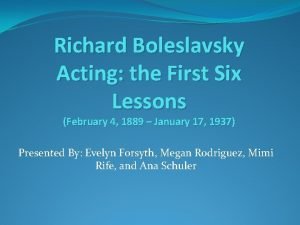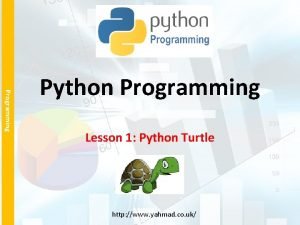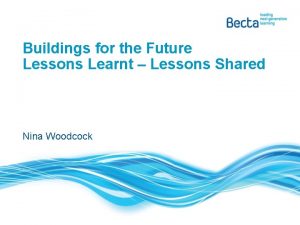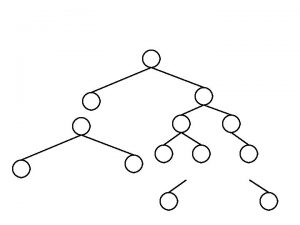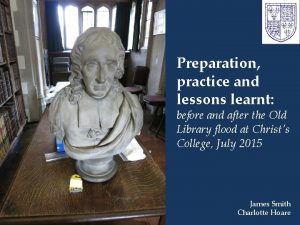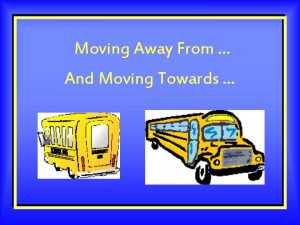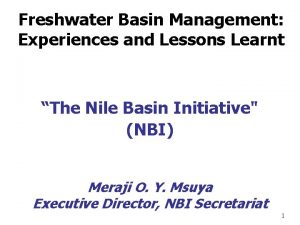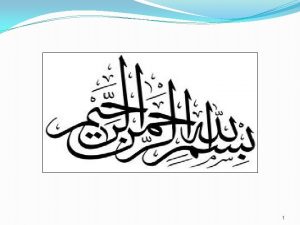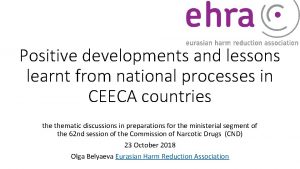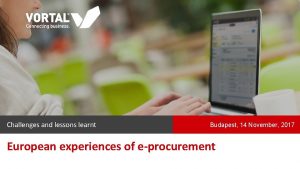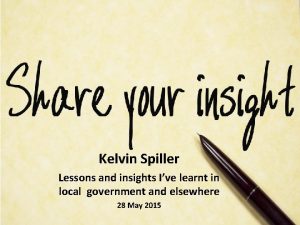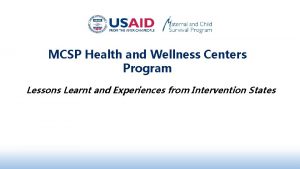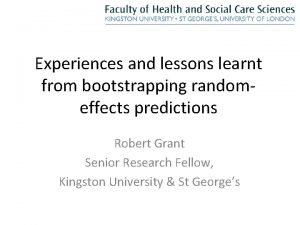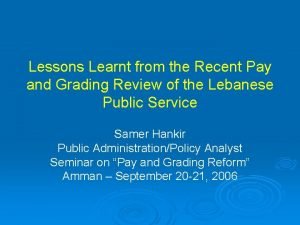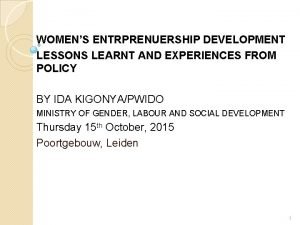Moving in and moving on Lessons learnt from























- Slides: 23

Moving in and moving on: Lessons learnt from programmes for Migrant and Humanitarian Entrant women and their children in Western Australia Edith Cowan University: Save the Children: Dr Anna Targowska - a. targowska @ecu. edu. au Dr Andrew Guilfoyle - a. guilfoyle@ecu. edu. au Susan Teather - s. teather@ecu. edu. au Dr Liza Beinart - liza. beinart@savethechildren. org. au Contact Info: www. ecu. edu. au/research/week

2 Background to the study Evaluation of It Takes a Village (ITa. V): Multicultural Learning Program Conducted by ECU research team beginning in 2010 and funded by Lotterywest Contact Info: www. ecu. edu. au/research/week

3 About ‘It Takes a Village’ program Multicultural Early Learning program for new migrant and humanitarian entrant families, established in 2009 in West Australia under auspices of Save the Children, Australia. What is ITa. V program? • Believes that all children are equally entitled to human rights • Targets migrant and humanitarian entrant women and children in the south-east metropolitan area of Perth. • Holistic approach to resettlement. • Embraces community capacity building whilst focusing upon early childhood. • Operates within an integrated service model that provides: • A supported playgroup model; • Life skills workshops and conversational English classes; • Intensive family support and referrals; and • Whole family events. Contact Info: www. ecu. edu. au/research/week

4 Statistical snapshot • Western Australia is the fourth largest settlement location for refugee families (DIAC, 2010); • 17% of the national settlement services target group settled in Western Australia in 2009 -2010 (DIAC, 2010); • 108 children of migrants and humanitarian entrant families arrived in Western Australia between 2009 -2010 (ASe. TTS, 2010); • Many migrant and humanitarian entrant families arrive with children under the age of five (ASe. TTS, 2010); • 70% of humanitarian entrants to West Australian were from Africa and this trend is continuing (DIAC, 2007, p. 21). • The majority of humanitarian entrants arriving in Western Australia are utilising settlement locations in the southern regions of metropolitan Perth (ASe. TTS, 2010). Contact Info: www. ecu. edu. au/research/week

5 Need for support • Migrant and humanitarian entrant children and families experience many challenges that threaten their successful resettlement and create risks for the integration process • Complex interplay of pre- and post displacement factors (Pittway, 2004; Mitchell, Kaplan & Crow, 2006) often result in : – feelings of social isolation, – lack of confidence to be actively involved in the Australian community; and – mental health issues (Colic-Peisker & Walker, 2003; Healey et al. , 2007; Ryan, Dooley and Benson, 2008; Tilburry, Clark, Slee & O’Ferrall, 2004) • These issues apply to all migrant and refugees, particularly common among refugee women whose social isolation is often intensified by traditional perceptions of gender roles • Importance of supporting families and young children. Contact Info: www. ecu. edu. au/research/week

6 The research Contact Info: www. ecu. edu. au/research/week

7 Methodology Conceptual framework The research project adopted a conceptual framework of social capital, understood as the development of networks characterised by trust and reciprocity (Stone, 2000). The synergy model was utilised to explore bonding and bridging dimensions of social capital among the program’s participants (Woolcock & Narayan, 2000). • Bonding -development of personal networks (e. g. bonding between family members or friends) • Bridging - creation of individual and community links to resources or opportunities that go beyond personal networks Contact Info: www. ecu. edu. au/research/week

8 Aims of the project To provide empirical evidence of the role of the program in building social capital of the newly arrived migrant and humanitarian entrant families participating in the program; To provide evidence for policy makers; To explore whether this model could be more widely incorporated into the suite of settlement services currently available. Contact Info: www. ecu. edu. au/research/week

9 Research methods § Qualitative approach to inquiry § Purposeful sampling § Data collection: • • Five Focus groups: Gosnells, Armadale & Thornlie Six staff interviews (with nine staff members) Ten Case study interviews One External Stakeholders focus group § The following groups represented: • Bangladeshi, Burmese, Burundi, Indonesian, Indian, Iraqi, Congolese, Pakistani, Somali. Contact Info: www. ecu. edu. au/research/week

10 Findings of the study Contact Info: www. ecu. edu. au/research/week

11 Outcomes for children Developed secure and trustworthy relationships with adults and children outside home environment These children are often quite unusual compared to other Australian families, because of their mothers’ social isolation. We often have four year olds who come here that have never spent a day without mum. You know there is no grandma, there is no aunty, there is no friend’s house that they go and stay overnight. (Staff member). For some children - first and only opportunity to interact with other children and practice English Contact Info: www. ecu. edu. au/research/week

12 Outcomes for children Emotional security The other thing is because of my daughter, she is communicat[ing] with other people and make[ing] friends. If I say we go somewhere she say, “Mum are we going to the playgroup? ” If I say no, she [will] start crying [because] she wants to come. So that is why my life starts from here. . . (Case Study participant). I spend a good time here because my son is so happy being with other children. During the whole week he asks me if he is allowed to come again and again. When we return home he is happy; he is [now]comfortable being with other [children] (Focus Group participant). Contact Info: www. ecu. edu. au/research/week

13 Outcomes for children. . . and. . • Improved readiness for school (English language skills, social and emotional competence, milestones in fine motor skills) • Improved transition to school • Opportunities to be in a safe, happy and stimulating environment • Reduced social isolation • Overall better long term developmental outcomes. Contact Info: www. ecu. edu. au/research/week

14 Outcomes for women Reduced social isolation The women have expressed almost tearful gratitude saying that before they came to the program they used to sit at home and cry all day. They had nowhere else to go, they didn’t know where to go. . . They didn’t know anyone for their children to play with (Staff member). Oh this is part of my life, playgroup. . . I’m not sure if I was staying at home, not doing anything, how my kids would be today. Maybe I [would] be stressed and taking tablets because I used to think a lot, there was nothing to do, no one to talk to, just me and the kids be left (Case study participant). Contact Info: www. ecu. edu. au/research/week

15 Outcomes for women Hard to access mainstream resources. . . lack of confidence to be involved in broader community I had a long discussion with an Iraqi woman from the playgroup. She started telling me that playgroup was the only thing that she came to, and prior to that when she left her house young people at X shopping centre threw stones at her (Staff member). A woman who came to our playgroup, and I asked if she had been to playgroups before and she said, “Oh yes I went to one playgroup but nobody talked to me”. And just tears rolled down her eyes (Staff member). Contact Info: www. ecu. edu. au/research/week

16 Lack of confidence to be involved in broader community It was terrible. I felt lonely, knowing no one, no friends, no family. It was really, really hard for me. I used to cry every day… the language, the shops … you go to the shops and want to talk, but you don’t understand what they say. I could speak a little English, but the accents of Australians, they are hard to understand. So I didn’t know what they [were] saying, and if they said something I would say, “Excuse me? ”, and they would say, “What are you after? ”, and I would just walk away. I didn’t understand “what are you after” meant (Case Study Participant). Contact Info: www. ecu. edu. au/research/week

17 Outcomes for women Ability to fit in. . . improved English language skills … when I go to the park with him [now], if there are other children in the park, he can play with the Australian kids, so he can speak. When he speak[s] to other children and they understand what he say[s] the child feel[s] happy and they start playing. He met [at ITa. V] other friends, other Australian families. So he doesn’t scare to be with other kids (Focus group participant). Contact Info: www. ecu. edu. au/research/week

18 Outcomes for women Becoming confident to reach out I met a lot of people and they were encouraging me … and [name of staff member)] told me that I could do something… I went to the city and I enrolled in certificate three [in] Health Services (Case Study Participant). When you are new to a country everything is new to you and you never know what is around you. So [it] is good if someone is telling you that. When you come here [to Australia, ] they give you a case worker for six months but that is not enough, in six months you never learn anything. After six months you are on your own and you don’t know anything. After the case worker left me, I suffer[ed] a lot. When I came here [to the ITa. V program] they told me what to do, how to get learner permit, I didn’t know where I can learn or where to go and get learner’s permit. . Now I know. I got my license, I am driving and I am confident (Focus Group Participant). Contact Info: www. ecu. edu. au/research/week

19 Outcomes for women. . . and. . • Feelings of having a purpose in life; • Awareness of new parenting strategies; • Development of life skills; English language, cooking, sewing, awareness of healthy life style (swimming and exercise classes); • Development of job related skills (computer skills, preparing resume and job applications); and • Success in obtaining a job or entering further studies. Contact Info: www. ecu. edu. au/research/week

20 Lessons learnt The strengths of ITa. V were identified as: • • • Geographical accessibility and the provision of transport (bus service); Integrated service delivery: – trustworthy community spaces in close physical proximity; Flexibility and responsiveness to individual needs of children and their mothers and family; Uniqueness: – not time limited support; – opportunities for frequent interactions that build relationships with participants; – availability of interpreters and family support workers; Staff who are caring, supportive and culturally competent; and • Staff who provide advice and physically link families to services. • • Contact Info: www. ecu. edu. au/research/week

21 The next step… Recommendations for fostering family wellbeing and supporting positive trajectory of refugee and humanitarian entrant families. . . • • Provision of transport; • Services & programs that school readiness of children and their families • • Identification, training and mentoring of community leaders; • Provision of sufficient budgets for interpreters and cultural competency training. Provision of safe and supportive community spaces, where participants can gather, interact and develop trustworthy relationships; Provision of flexible English classes with culturally appropriate care for children; and Contact Info: www. ecu. edu. au/research/week

22 Thank you…. • For a copy of the report please go to the Save the Children website www. savethechildren. org. au Contact Info: www. ecu. edu. au/research/week

23 References Association for Services for Torture and Trauma Survivors. (2010). Humanitarian arrivals in Western Australia for 2008 -09. Factsheet No 3. Colic-Peisker, V. , & Walker, I. (2003). Human capital, acculturation and social identity: Bosnian refugees in Australia. Journal of Community and Applied Social Psychology, 13, 337 -360. Department of Immigration and Citizenship. (2007). Western Australia: Settlement trends and needs of new arrivals 2007. Canberra, ACT: Commonwealth of Australia. Department of Immigration and Citizenship (2010). Immigration update 2009 -2010. Barton, ACT: Commonwealth of Australia. Heally, K. , Hampshire, A. , Ayres, L. , Ellwood, S. & Mengede N. (2007). Creating better communities: A study of social capital creation in four communities. Paddington, NSW: The Benevolent Society and the University of Sydney. Mitchell, J. , Kaplan, I. , & Crowe, L. (2006). Two cultures: One life. Community Development Journal, 42(3), 282 -298. Pittway, E. (2004). The ultimate betrayal: An examination of the experience of domestic and family violence in refugee communities. New South Wales: Centre for Refugee Research. Ryan, D. , Dooley, B. & Benson, C. (2008). Theoretical Perspectives on Post-Migration Adaptation and Psychological Well-Being among Refugees: Towards a Resource-Based Model. Journal of Refugee Studies, 21(1). doi: 10. 1093/jrs/fem 047 Stone, W. (2000). What role for social capital in family policy? Family Matters, 56, Winter, Australian Institute of Family Studies. Tilbury, F. , Clark, S. , Slee, R. , & O’Ferrall, I. (2004). Listening to Diverse Voices Multicultural Mental Health Promotion Research Project – Eritrean, Ethiopian, Somali and Sudanese communities in Western Australia. Perth: East Metropolitan Population Health Unit and Murdoch University. Woolcock, M. & Narayan, D. (2000). Social capital: Implications for development theory, research and policy. The World Bank Research Observer, 15(12), 225 -9. Contact Info: www. ecu. edu. au/research/week
 What have we learnt from the story? *
What have we learnt from the story? * What have you learnt from the story
What have you learnt from the story What have you learnt from the story
What have you learnt from the story What have we learned from the story
What have we learned from the story What have we learnt from the story
What have we learnt from the story Go kiss the world summary
Go kiss the world summary Lesson plan of lesson a gift of chappals
Lesson plan of lesson a gift of chappals L have just learnt to
L have just learnt to Shunammite woman lessons
Shunammite woman lessons Leadership lessons from elijah and elisha
Leadership lessons from elijah and elisha Cause of death
Cause of death Leviticus 10 1-3
Leviticus 10 1-3 Lessons from david and goliath
Lessons from david and goliath Chapter 6 quiz 1 lessons 6-1 and 6-2 answers
Chapter 6 quiz 1 lessons 6-1 and 6-2 answers Suffix ful and less
Suffix ful and less Word choice lessons
Word choice lessons Tone diction imagery
Tone diction imagery Vex iq lessons
Vex iq lessons Tinkercad lessons for middle school
Tinkercad lessons for middle school Great gatsby activities
Great gatsby activities The five people you meet in heaven lessons
The five people you meet in heaven lessons 7 plagues of egypt
7 plagues of egypt Boleslavsky the first six lessons
Boleslavsky the first six lessons Python lesson 1
Python lesson 1
